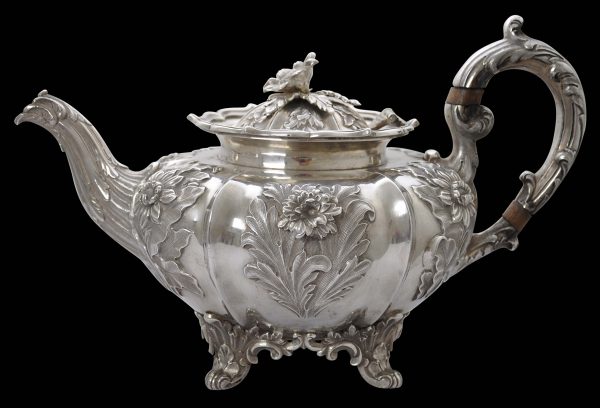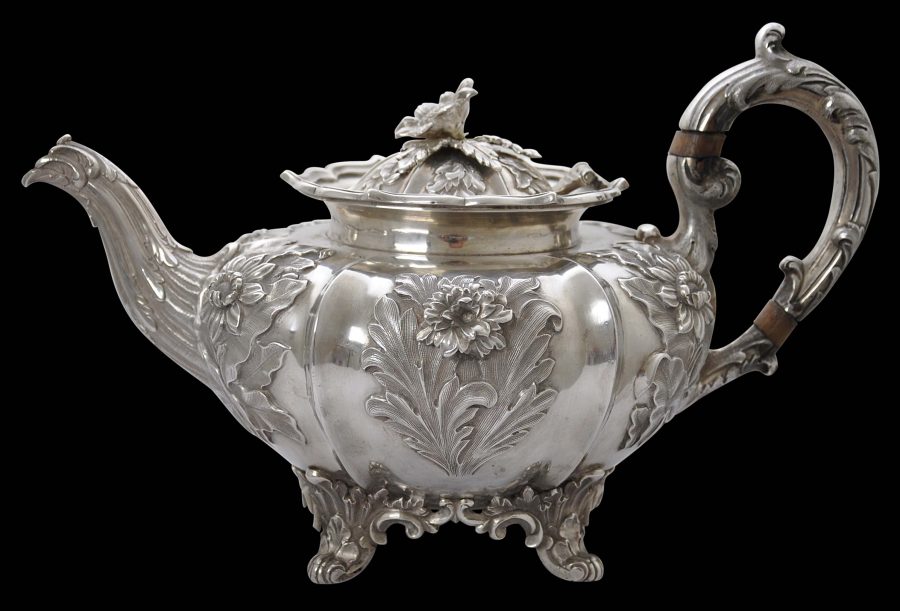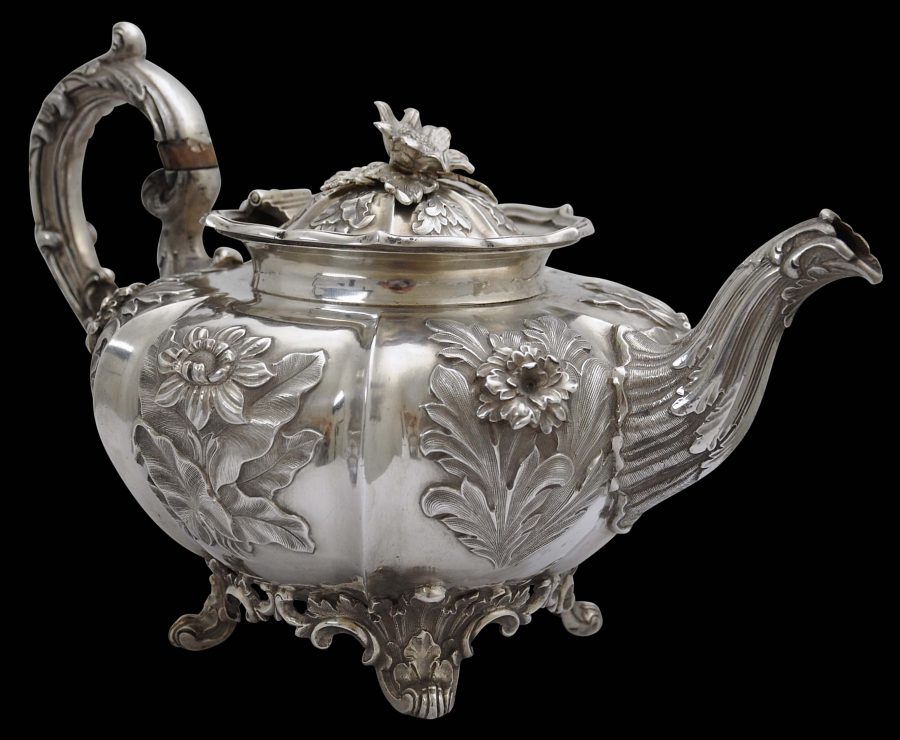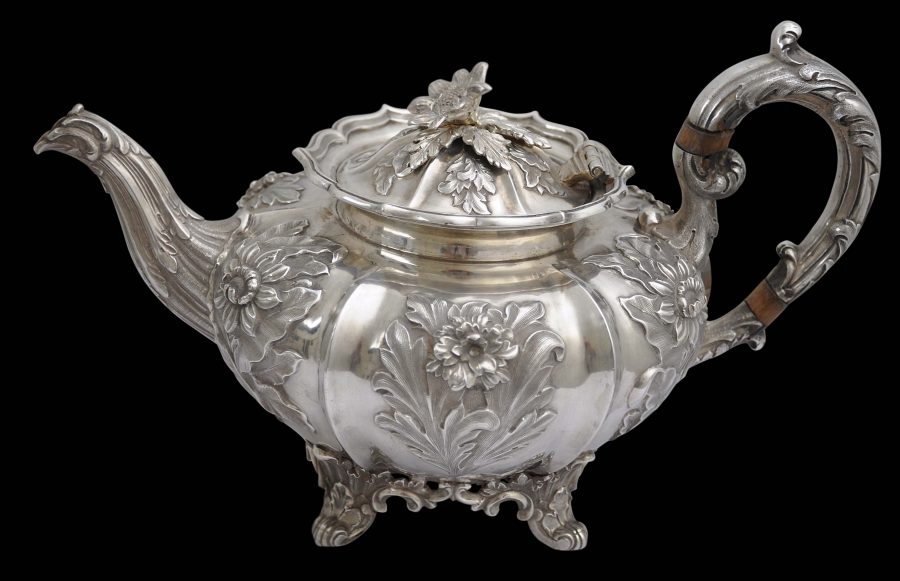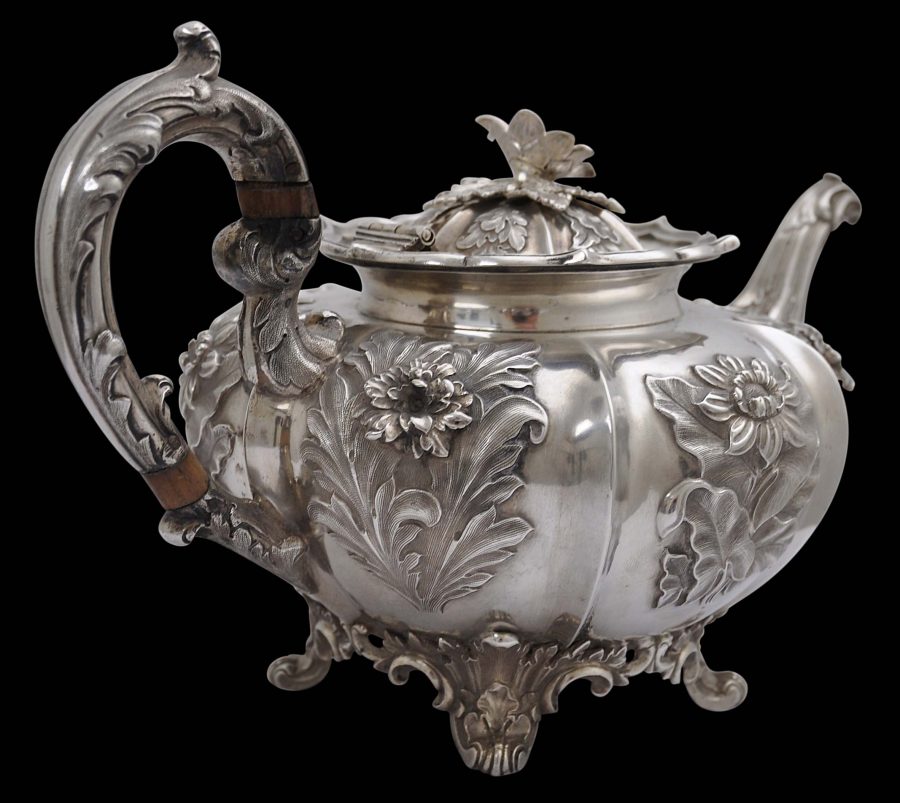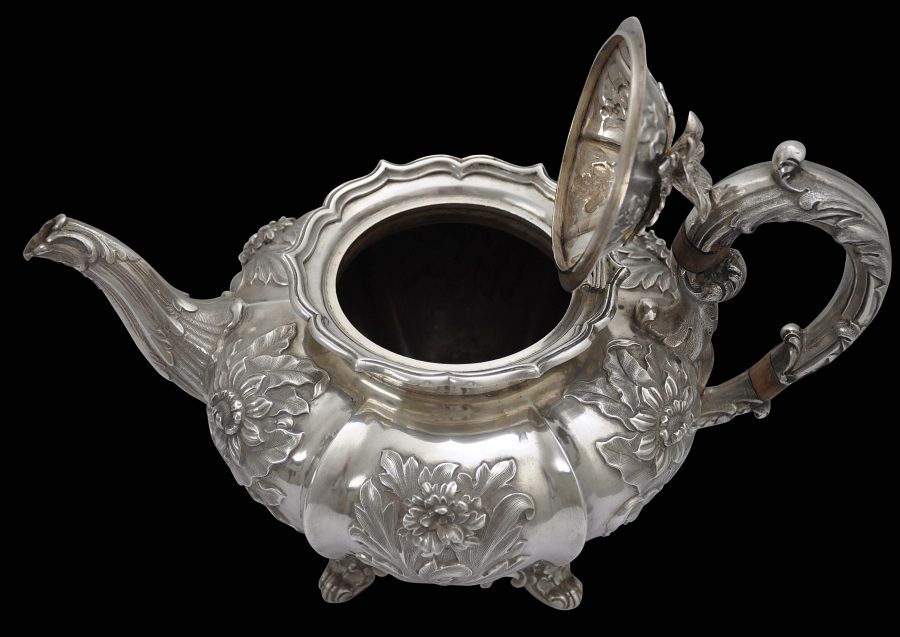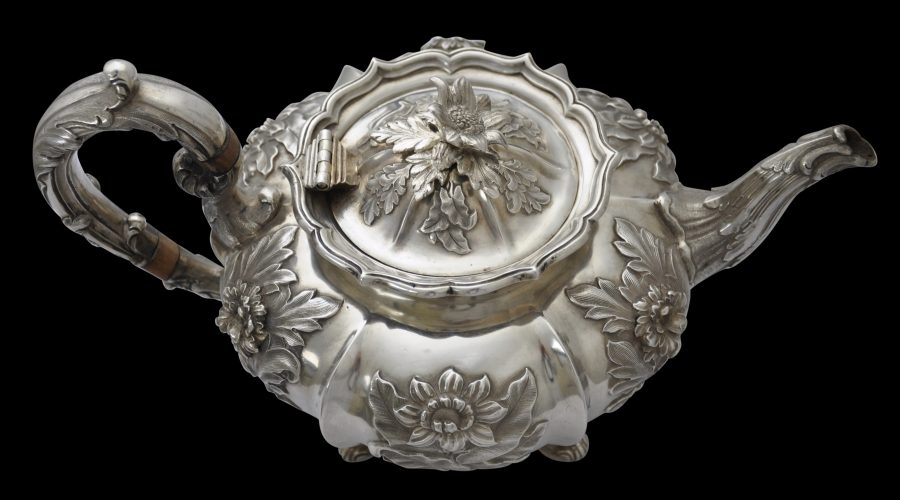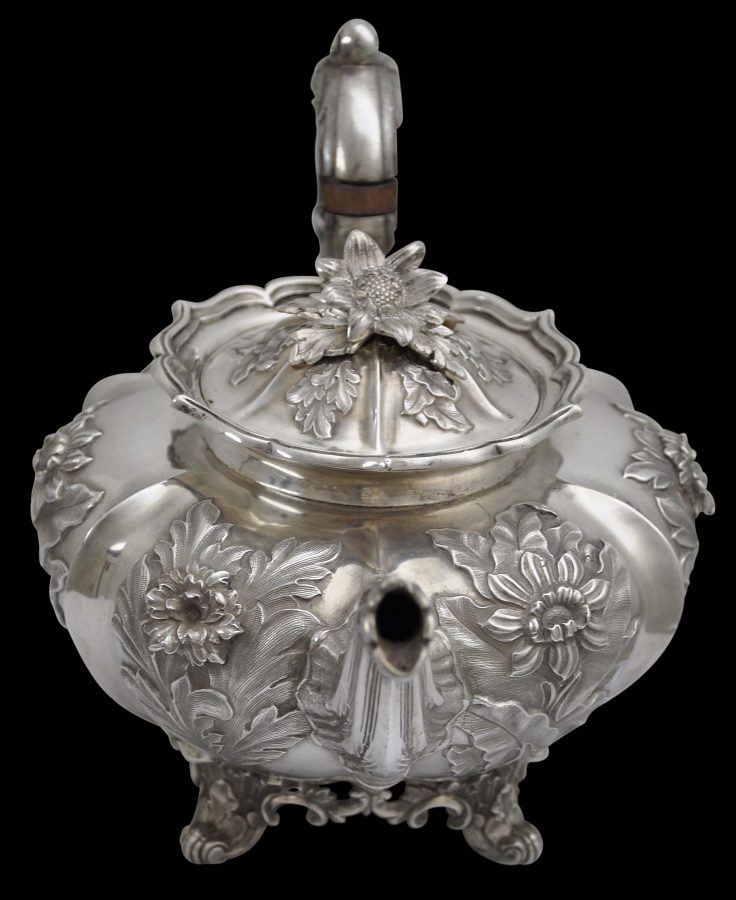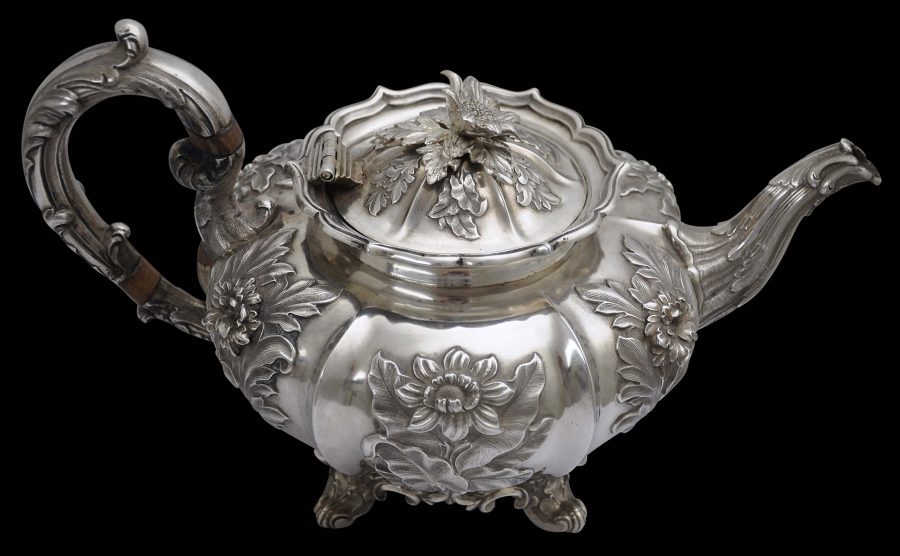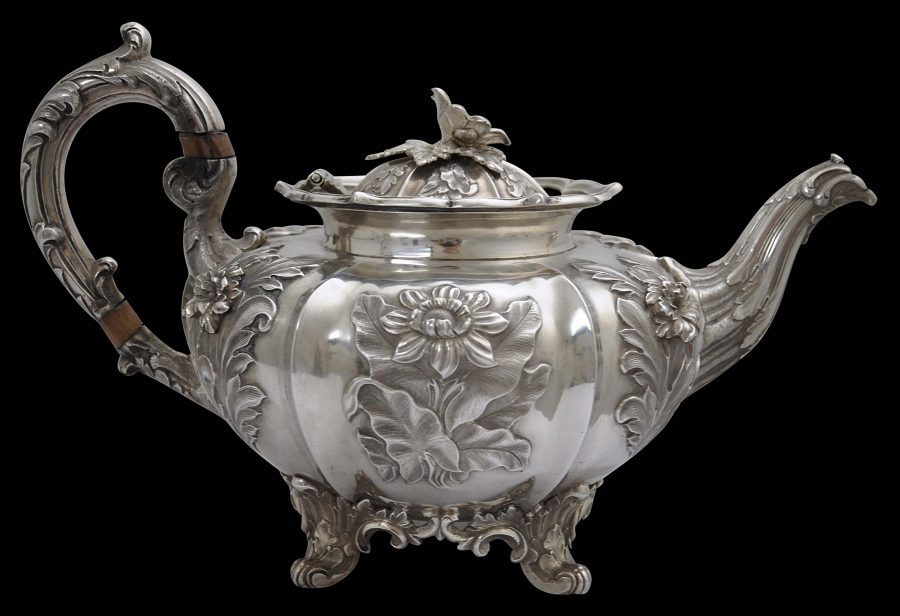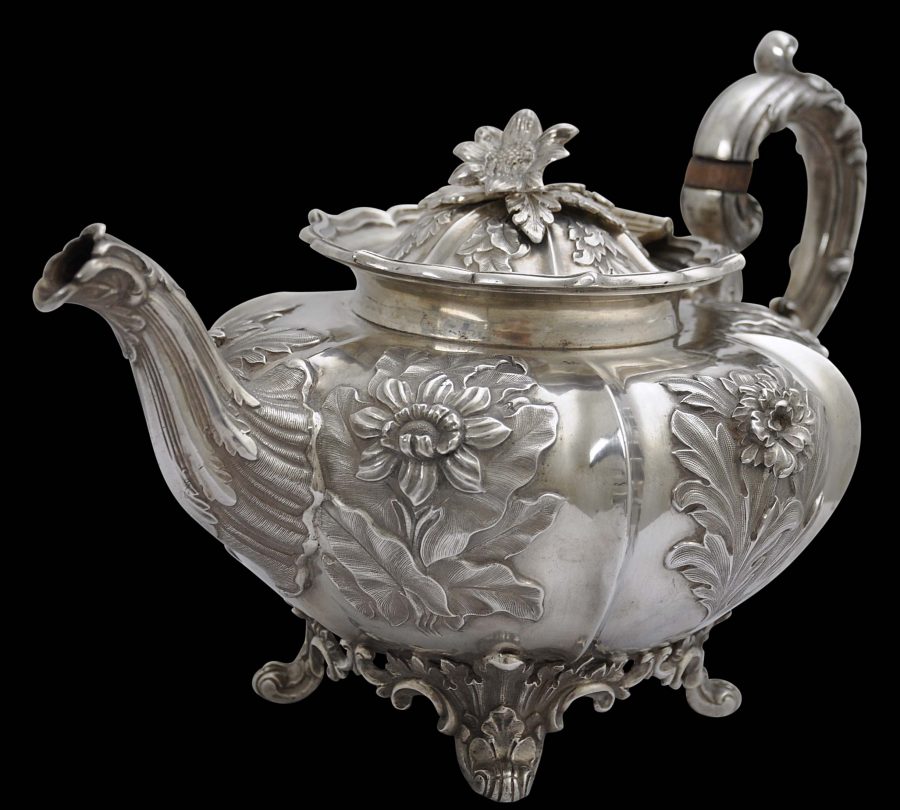This teapot by the colonial Calcutta silversmiths Hamilton & Co. is the best colonial Indian silver teapot we have seen. It is magnificent.
The body is akin to a flattened pumpkin with sharps fins or gadroons separated by concave fields decorated in high and varying relief with a variety of flowers surrounded by leaves. The silversmith’s skill inherent in the beautifully modelled flower decoration is of a level almost never seen on colonial Indian silver work.
The teapot sits on four cabriole feet which flare outwards and which emerge from a leafy rococo frieze.
The spout and the handle are decorated with leafy rococo flourishes.
The hinged lid sits in a well marked by a stylised lotus flower-form rim. The lid is domed and decorated with gadroons and leaves. It is surmounted by an applied cast flower that emerges from leaves.
The base is impressed with four marks associated with Hamilton & Co, of around 1820-30. One is the company’s identifying mark of H&C, another is an impressed urn, another is an elephant and finally, the letter ‘A’. Wilkinson (1999, p. 53) mentions that the urn mark tends to have only appeared on more important pieces and was used from 1815 to 1850.The firm was founded in Calcutta around 1815 and operated from premises at 7 Old Court House Street in Calcutta for at least some of its life.
The insulators in the handle are not of ivory but of wood, so the teapot can be easily and legally shipped to the US and elsewhere.
There is some expected and age-related shrinkage to the wood insulators but otherwise the teapot is in excellent condition. Silver is difficult to photograph and the photographs here do not fully portray the quality of the depth and lushness of the silverwork on this item.
References
Wilkinson, W.R.T, Indian Colonial Silver: European Silversmiths in India (1790-1860) and their Marks, Argent Press, 1973.


